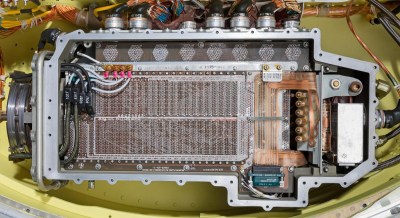In 1962, unlike today, most things didn’t have computers in them. After all, the typical computer of the day was a fragile room-sized box that required a gaggle of high priests to service it. But the Minuteman I nuclear missile was stuffed full of pre-GPS navigation equipment and a computer. In a few years, by 1970, the Minuteman III could deliver a warhead 13,000 km with an accuracy of 200 meters. Each one cost about a half million dollars, but that’s almost five million in today’s money. [Ken] takes on a very detailed tour of the computers and avionics that were nothing short of a miracle — and a highly classified miracle — in the 1960s.
The inertial navigation relied on a gyroscope, which in those days, were large and expensive. The Minuteman I required alignment with a precise angle relative to the North Star which naturally wasn’t visible from inside the silo. By the time Minuteman II arrived, they’d figured out an easier way to orient the missiles.
The name Minuteman, by the way, came from the weapon’s ability to launch in a minute. The gyros ran, more or less, all the time, and the solid-fuel rocket was always ready to go.

What really interested us, though, was the onboard computer. There was a basic model, the D17-B, in the Minuteman I. Later missiles used the D-37 computer. The D-17B was made to fit in a rocket casing and used a serial CPU, presumably to reduce “SWAP” (size, weight, and power). That means the 24-bit CPU was painfully slow, doing, at best, 12,800 additions per second.
The computer had no RAM, but did have a “disk” which was really more like a magnetic drum — common at the time — flattened out. The D-17B was made with discrete transistors — lots of them. The D-37 actually used integrated circuits. There is a picture of a D-17B looking like half of a washing machine tub alongside a D-37, about the size of a serious oscilloscope of those days. Fun fact: the surplus D-17B computers were given away to universities and other organizations for use as a general-purpose microcomputer.
There’s a lot more in the post. Be prepared to spend some time reading and looking at the detailed pictures. While we know nuclear weapons are frightening, we can’t help but admire a radiation-hardened computer built with ICs and able to withstand the shock of a rocket launch built back then.
If you want your own nuclear bunker keyboard, we’ve seen one. If you want to administer a Linux system with virtual counter-rotating keys, that’s possible, too.
